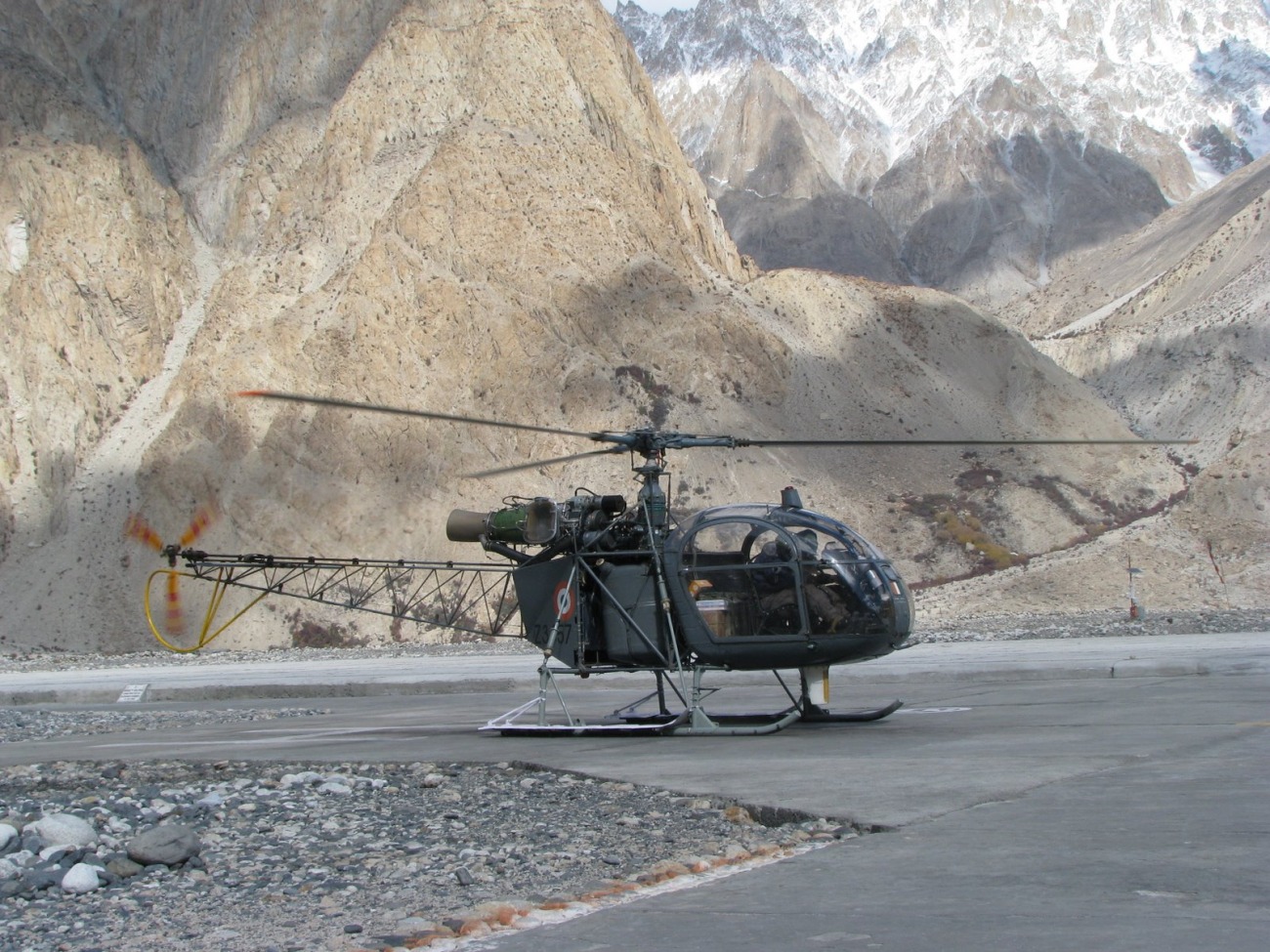Sleeping With The Dead! How Indian Army Operates At Siachen, World’s Highest Battlefield, With Blessings Of ‘Guardian Deity’

Faith can move mountains, but it is the faith that keeps the Indian Army soldiers going at the highest battlefield of Siachen Glacier, where the biggest enemy remains the extreme weather and the treacherous terrain.
Interestingly, OP Baba is the ‘Guardian Deity’ of the Siachen Glacier and helps the soldiers through their three-month tenure at the most challenging military outpost.
Siachen, known as the ‘Third Pole,’ is the world’s highest Glacier outside the north and south poles. Siachen deceivesly means “the place of roses.” Today, it is known as the highest battleground in the world.
On April 13, 2024, it will be 40 years since the Indian Army occupied Siachen Glacier in a well-executed Operation Meghdoot that took the Pakistan Army by surprise in 1984.
Now, the guns have been silent in the Glacier since 2003, but it remains one of the toughest postings for the Indian soldiers. One gets posted to the place for only three months, as scientists say 90 days at that high altitude cuts five years from one’s life expectancy.
The rarefied atmosphere at high altitudes also makes breathing challenging. The weather is such that parts of your body exposed to the sun can get sunburned, and parts in the shade can get chill burn simultaneously. Sun rays bouncing off the snow can cause snow blindness. Most soldiers complain of insomnia that doctors attribute to lack of oxygen and extreme cold.
When food is taken off the burner, it goes stone cold, washing your face becomes a luxury, and drinking water smells of the kerosene used to melt the ice. Yet, the soldiers stoically endure this, serving for a minimum of three months on the Glacier in a two-year tenure in the area.
Loss of appetite at the maddening heights causes soldiers to shed weight, and when they return, they are a paler version of themselves. But despite all odds, they have unwavering faith in ‘OP Baba.’
The legend is that Om Prakash, an artillery soldier, was sent on a patrol on Malaun Post in Bila Complex in Northern Glacier in the late 1980s. There he single-handedly thwarted an enemy attack at the Malaun post while the other soldiers had been temporarily called to the rear headquarters. The body of Om Prakash was never found, and he never returned. What happened to soldier Om Prakash remains a mystery.
The troops at the Glacier firmly believe that OP Baba protects them not only from the depredations of nature but also from the enemy by forewarning them by appearing in their dreams. The belief in the soldier saint is so strong that no soldiers leave for the forward post after training at the Siachen Base Camp without seeking the blessing of OP Baba.
When the author went to trek with the Indian Army in 2008, before the beginning of the trek at Siachen Base Camp, a formal report was offered to OP Baba’s shrine by the senior-most army officer.
The tradition is followed to date before the induction of a soldier party on the Glacier. During the report, the officer tells them the strength of the troops being inducted, and the deity is exhorted to look after them. Following that, the soldiers shout “OP Baba Ki Jai” thrice (Hail OP Baba).
The legend of OP Baba has gained so much faith among the soldiers that a small shrine has been built at every post in the Glacier. Every time a posse of soldiers leaves a post or reaches another post safely, a report is offered to OP Baba.
The soldiers give up the consumption of alcohol and tobacco during their three-month-long tenure on Siachen Glacier.
At Siachen Base Camp, the shrine of OP Baba is just a few meters from the snout of the Glacier, where it melts to become the Nubra River. The shrine was built in 1996 and was upgraded to ‘sarva-dharm sthal,’ a multi-faith temple. Regiments of every faith will bow down to seek the blessing of the legendary soldier.
Legends are part of the postings at the Siachen Glacier. A silhouette on a mountain at the Siachen Base Camp was called the “woman of Siachen” by the soldiers posted there, and they believed that no woman could be posted there. In 2023, Captain Shiva Chauhan became the first woman army officer to be operationally deployed on the Siachen Glacier. She was deployed at the Kumar post, located at an altitude of around 15,600 feet.

Life At Siachen Glacier
In 2008, the author got the chance to witness how the Indian Army soldiers were braving the formidable weather and other extremities to impose the national will on the highest battlefield by overcoming the limits of the human body.
The soldier’s induction starts at Leh. The lungs have to be accustomed to the lack of oxygen at high altitudes, the brain has to maintain a semblance of sense, the skin has to risk sunburns and frostbites, and the pressure in blood vessels has to remain within limits.
The soldiers undergo mountaineering training at the Siachen Base Camp, the highest military training academy in the world. It is this training that will save the soldiers on the forbidden heights, where life is not meant to thrive.
The troops trained here for months before ascending to various posts, the highest being the Bana post at 22,143 feet. Soldiers carry their complete load, and it takes about a month to reach there.
The author also underwent basic mountaineering training at the base camp. The first day was spent getting accustomed to the weight of the 4 kg Scarpa trekking shoes. On the second day, we practiced ice climbing on ‘The Wall’ (at the base camp) and learned how to use mountaineering equipment.
The soldiers’ entire tenure is subhuman, and they undergo extensive health check-ups before being deployed to higher posts.
Special rations, including dry fruits and chocolates, are provided to the troops at those heights. However, the loss of appetite and plummeting winters mean that the chocolate freezes so much that some of the makeshift helipads on the higher posts are made of frozen chocolate boxes covered with tarpaulin.
When trekking to their posts, the soldiers are generally tied to four others with ropes. The ropes are meant to save one against a misstep while traversing deep crevasses and other treacherous terrain.
Bringing Back Those Who Lost Their Lives Defending Icy Heights
The Chetak/Cheetah (French-origin Alloutte III helicopters) are the lifelines for soldiers in the Glacier. Between 1985- 2003, the Siachen Glacier was an active warzone with Pakistani artillery fire constantly targeting Indian positions. This, coupled with harsh weather, would make the flying conditions arduous for the pilots.
The standard operating procedure is that helicopters don’t fly in the region after noon unless there is an emergency.
The pilots often land at matchbox-size helipads with only an inch of space left after landing. The choppers fly at the edge of their flight envelope, and the pilots land on makeshift helipads. Loading and unloading is done as quickly as possible.
Over the years, a code has evolved to set priorities for evacuation by helicopters. P-1 for seriously injured soldiers, P-II for less urgent patients, P-III for sending officers up and down, and P-IV was to evacuate those who could not survive the Glacier. When it came to evacuation the living always took precedence over the dead.
Since transporting the dead was P-IV, it would mean that very often, rigor mortis would set in, and the bodies would stiffen by the time it was their turn to be ferried down. Cheetah helicopters were too small to accommodate the prone bodies, and the soldiers were forced to break the limbs of the dead, stuff them in a sleeping bag, and then ferry them back.
The insignia that a soldier wears on his uniform to depict the posting at the highest battleground is a small grey/white ribbon on top of the left pocket of the uniform. It denotes the soldier has battled the harsh climate at Siachen Glacier.
Another legend is that the ice-axe of Colonel Narendra ‘Bull’ Kumar, who opened the Siachen Glacier on the Indian side for trekking, was lost during an expedition to the Glacier. And till the time the axe is not recovered, the Indian Army is bound to defend the icy heights.
- Questions and Answers
- Opinion
- Story/Motivational/Inspiring
- Technology
- Art
- Causes
- Crafts
- Dance
- Drinks
- Film/Movie
- Fitness
- Food
- Spellen
- Gardening
- Health
- Home
- Literature
- Music
- Networking
- Other
- Party
- Religion
- Shopping
- Sports
- Theater
- Wellness
- News
- Culture
- War machines and policy

